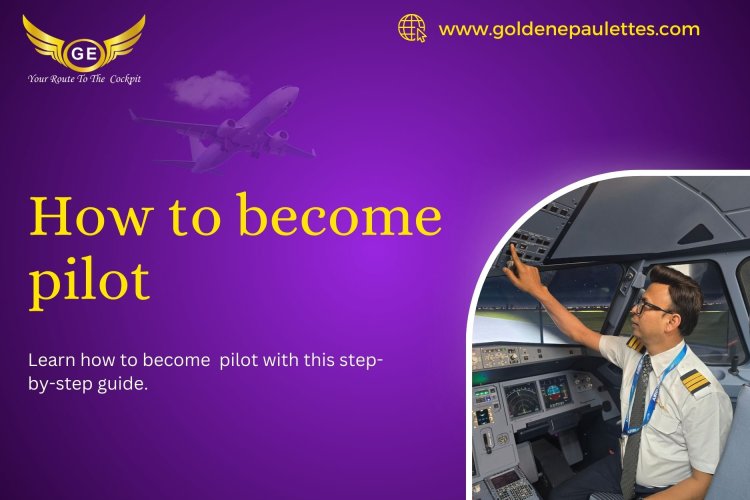How to Become a Pilot: Understanding the Cost of Flight Training
In this article, we’ll break down the various costs associated with flight training and provide tips on how to manage the expenses.

How to Become a Pilot: Understanding the Cost of Flight Training
One of the most common questions prospective pilots ask is about the cost of flight training. Becoming a pilot requires an investment of both time and money, and understanding the financial aspects of how to become pilot is crucial for planning your journey. In this article, we’ll break down the various costs associated with flight training and provide tips on how to manage the expenses.
1. Initial Costs for Flight Training
The first major expense in how to become pilot is typically the cost of the initial flight school enrollment. Flight schools usually charge for both ground school and flight hours. The total cost of flight training will vary depending on the school, the type of certification you’re pursuing, and the number of flight hours you need. On average, you can expect to pay anywhere between $8,000 and $15,000 for a Private Pilot License (PPL), which includes both flight time and ground school. Some schools may offer package deals that bundle ground school and flight training together.
2. Flight Hours and Aircraft Rental
As part of your flight training, you will need to log a minimum number of flight hours, which is a major expense. For example, to obtain a Private Pilot License, you’ll need to log at least 40 hours of flight time. However, most students require more than the minimum number of hours to become proficient, which can increase the total cost. The cost of aircraft rental varies depending on the type of aircraft you’re flying, with rates typically ranging from $100 to $200 per hour. This is a recurring expense as you accumulate your required flight hours.
3. Additional Training Costs
In addition to flight hours, there are other costs to consider when learning how to become pilot. For example, you will need to purchase books and study materials for ground school, which can cost anywhere from $200 to $500. You’ll also need to pay for your medical examination, which can cost between $75 and $200. Another significant expense is the cost of taking the written knowledge test and the practical flight test, which may also vary depending on your location.
4. Financing Options for Flight Training
Since flight training can be expensive, many students seek ways to finance their education. Some flight schools offer payment plans, while others may provide financing options through third-party lenders. Scholarships and grants are also available for aspiring pilots, especially for women, minorities, and veterans. Additionally, some students choose to join the military or pursue loans designed specifically for aviation training. Exploring all the available financing options can help make how to become pilot more affordable.
5. Saving on Flight Training
To reduce the cost of flight training, consider these tips:
-
Fly frequently: The more consistently you fly, the faster you will progress and the fewer hours you’ll need to reach your certification.
-
Look for discounts: Some flight schools offer discounts or promotions during certain times of the year.
-
Train at a flight school near you: Flying close to home can save you on travel expenses, especially if you’re attending ground school in another city.
Conclusion
Flight training is a significant investment, but it is an investment that pays off in terms of the skills, experiences, and opportunities it provides. By understanding the costs involved and planning your finances, you can successfully navigate the financial aspect of how to become pilot. Whether you pursue financing options or save up over time, staying focused on your goal of becoming a pilot is key to overcoming the financial challenges.
What's Your Reaction?


















.jpg)
